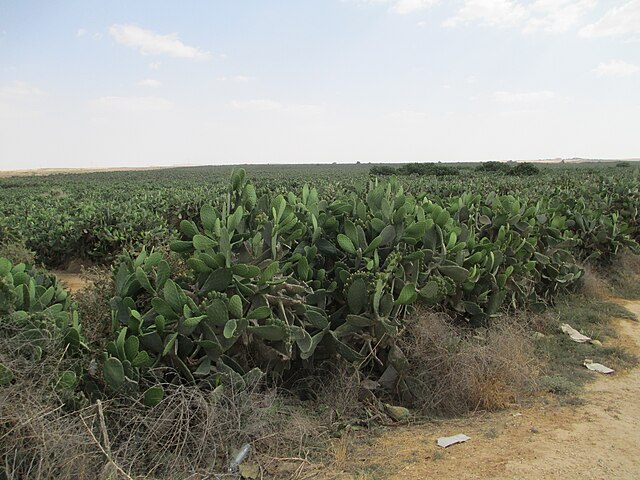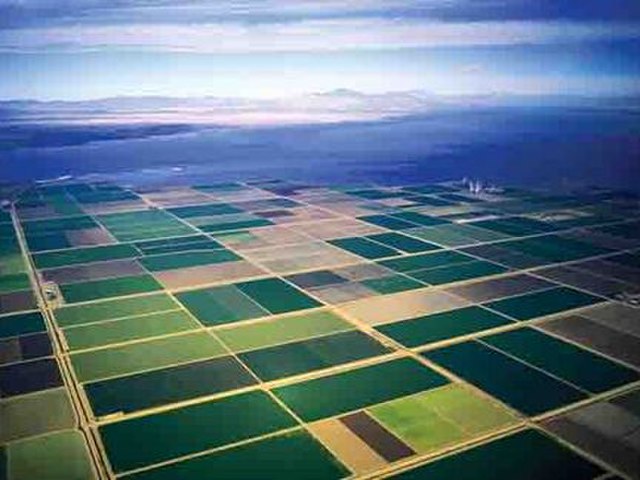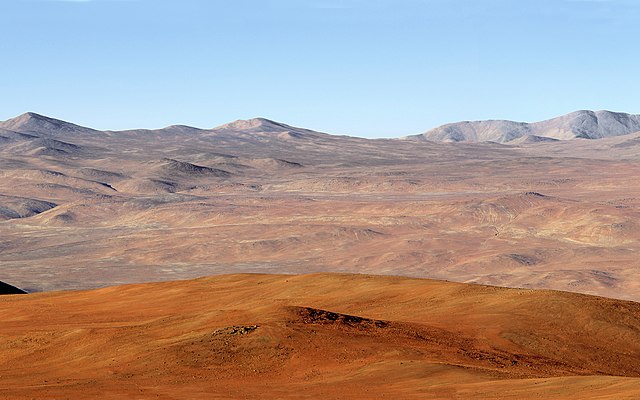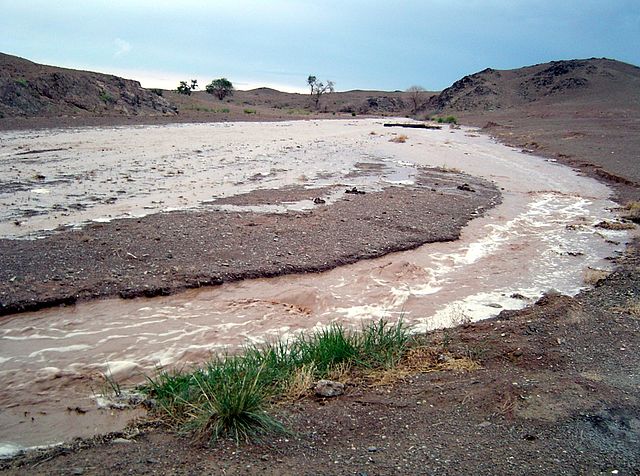Desert farming is the practice of developing agriculture in deserts. As agriculture depends upon irrigation and water supply, farming in arid regions where water is scarce is a challenge. However, desert farming has been practiced by humans for thousands of years. In the Negev, there is evidence to suggest agriculture as far back as 5000 BC. Today, the Imperial Valley in southern California, Australia, Saudi Arabia, and Israel are examples of modern desert agriculture. Water efficiency has been important to the growth of desert agriculture. Water reuse, desalination, and drip irrigation are all modern ways that regions and countries have expanded their agriculture despite being in an arid climate.
An aerial view of irrigation from the Nile, supporting agriculture in Luxor. Agriculture in Egypt has existed since 5500 BC.
Prickly pear cactus is grown in arid conditions.
A farm in modern-day Israel utilizing drip irrigation.
Fields in the Imperial Valley, California as seen from above.
A desert is a landscape where little precipitation occurs and, consequently, living conditions create unique biomes and ecosystems. The lack of vegetation exposes the unprotected surface of the ground to denudation. About one-third of the land surface of the Earth is arid or semi-arid. This includes much of the polar regions, where little precipitation occurs, and which are sometimes called polar deserts or "cold deserts". Deserts can be classified by the amount of precipitation that falls, by the temperature that prevails, by the causes of desertification or by their geographical location.
Sand and dunes of the Libyan Desert
Valle de la Luna ("Moon Valley") in the Atacama Desert of Chile, the world's driest non-polar desert
Atacama, the world's driest non-polar desert, part of the Arid Diagonal of South America
Flash flood in the Gobi








